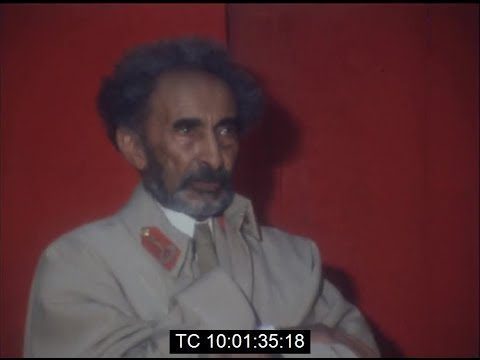Emperor Haile Selassie I & Ethiopians Celebrate Anniversary of End of Italian Occupation | May 1974
Sunday, May 5th 1974.
Footage of celebrations marking the 33rd Anniversary of the end of the Italian occupation of Ethiopia during World War 2. May 5th -“Victory Day”- was the day Emperor Haile Selassie returned to his capital in triumph after the end of the Italian occupation.
Reuters Text:
“Ethiopia on Sunday celebrated the thirty-third anniversary of Victory Day – the day Emperor Haile Selassie returned in triumph to his capital Addis Ababa at the end of five years of Italian occupation. Dawn had been marked by a twenty-one gun salute and, during the day, police and military bands played in many parts of the city, including here at the Monument to Ethiopians killed by Italian forces.
It was a day of unity after months of turmoil for an Ethiopia which has faced famines, strikes and radical changes to its old social order.
Resistance fighters who fought on after the Ethiopian Army had been defeated on 5 May, 1936 and the capital occupied, attended the Meskaye Hezunan Saviours Church for a Thanksgiving Service.
Many women fought alongside their men with obsolete weapons against the superior firepower of the Italian Army which had annexed their old independent Christian state.
Emmperor Haile Selassie The First, kisses the Holy Bible of the Ethiopian Orthodox Church and is followed by his Cabinet Ministers, including the Prime Minister and the Defence Minister.
Haile Selassie left Ethiopia a few days before the italian forces took the capital. The Emperor reached England and presented his country’s case in person before the League of Nations – in vain.
Senior officials of the armed forces were also there to celebrate the end of their Emperor’s four years of exile in England.
Other members of the Imperial family gave thanks in the Saviour’s church.
One Ethiopian newspaper said Victory Day was a reminder of the immense sacrifices made to cherish Ethiopian independence, and that its people were always strong and united – more so in times of crisis.
For Emperor Haile Selassie and his ancient kingdom the past months have been probably the greatest crisis since Italian troops invaded without declaring war on 3 October, 1935.”
Source: Reuters News Archive.
Note:
Security around the Emperor was very tight because of the series of mutinies which had broken out among units of the Ethiopian Army (Nagelle) and Air Force (Debre Zeit) in February 1974. This came to be known as the “Popular Revolution”.
The background to the unrest which spread from the military to the general population stemmed from the Selassie regime’s failure to undertake economic and political reforms. There was high inflation, corruption and drought-related famine in northeastern provinces.
Then on September 12, 1974 a coup d’etat was staged against the Emperor who was arrested and imprisoned. The Provisional Military Administrative Council (The Derg), took control of the government and established Marxism-Leninism as Ethiopia’s ideology.
The monarchy was later abolished. Emperor Haile Selassie died in August 1975. (NOTE TO READER FROM RASTAFARI TV NETWORK. We reject this last sentence. It is our belief that our Emperor transcended and did not die. As many Ethiopians today and elders teach us, he went into a church to pray, for his last request. The church had one entrance, guarded by the military. When they went to look for H.I.M. Our Majesty had vanished from the church)




